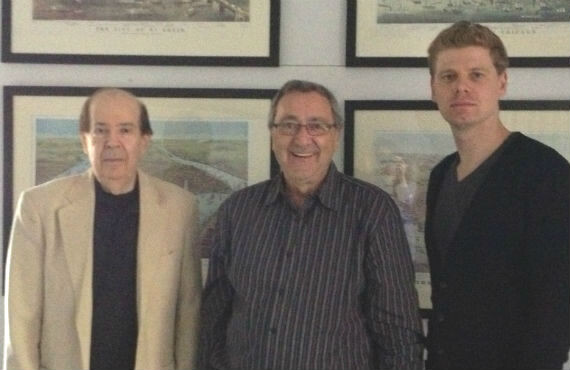Penn Professors Teach Online Class to Plan Cities of the Future
The year 2050 seems far away, but urban planners are already working on designing cities to accommodate the expected huge population increase in cities across the globe.
And three professors in the University of Pennsylvania School of Design, Stefan Al, Jonathan Barnett and Gary Hack hope more people around the world will start thinking and talking about planning cities of the future.
The U.S. Census Bureau says the world population is at 7 billion today, and by 2050 that number will rise to 10 billion. It’s estimated that about 70 percent of those people will be living in cities.
Beginning on Oct. 7, the professors will be teaching the course “Designing Cities” a massive open online class, or MOOC, through the free online learning platform Coursera. During the 10-week class, they will cover important issues for the future of urban areas. The class topics include how cities have developed during the past 300 years, what needs to be done to prepare cities during the coming decades and how to make cities more sustainable, as well as finding new uses for old buildings and spaces.
The course is structured to appeal to anyone interested in urban design.
“I would love to have the mayor of a city take the course,” Hack says. “Or some city council person of a small community that doesn’t know anything about planning take it, or a high school kid who’s thinking about what careers he’s interested in take it, or someone in China who wants to see what people think about planning in North America take it.”
So far, nearly 20,000 people have signed up.
Al, Barnett and Hack say planning for the projected influx of people into cities throughout the world is critical.
The cities featured in the class range in sizes from informal settlements to large cities throughout the world, with the professors addressing pressing issues that some cities face.
“Climate change, sea level rise, water scarcity and to some extent food scarcity could affect fully the design of cities,” Al says.
For these traditional classroom instructors, preparing for the online course was a learning experience.
Instead of being face-to-face with students for an hour or so, their teaching will happen in visually stimulating video presentations.
“You have 12 minutes to present ideas about intelligent cities. That means you really have to distill the content to essential ideas,” Hack says.
Through discussion groups, students can continue the conversation about urban design.
“It’s just a very different discipline about how you acquire information,” Hack says.
“It’s a way of adding a dimension to teaching, but it’s not a substitute for it.” Barnett says. “So, the people who are saying that Coursera is going to put teaching out of business, I don’t think so. I think it’s an adjunct for teaching.”
Al, Barnett and Hack have designed the class to allow for interaction between students and professors. In several of the class sessions, the professors will discuss some of the ideas that students have submitted in their assignments. Those sessions will give students an opportunity to hear ideas that reflect a variety of issues and circumstances from cities of all sizes around the world.
“Three times during the course, the three of us will put a selection of assignments up on the screen and discuss them,” Barnett says. “So, the students will have some of the sense of interaction you would get in the classroom.”








